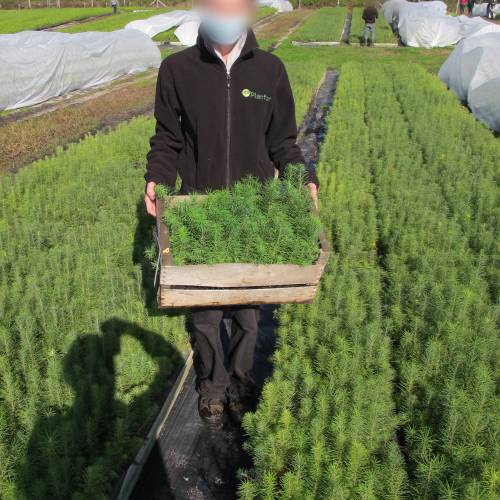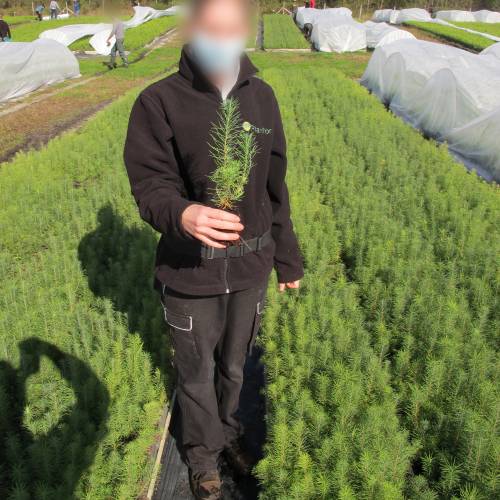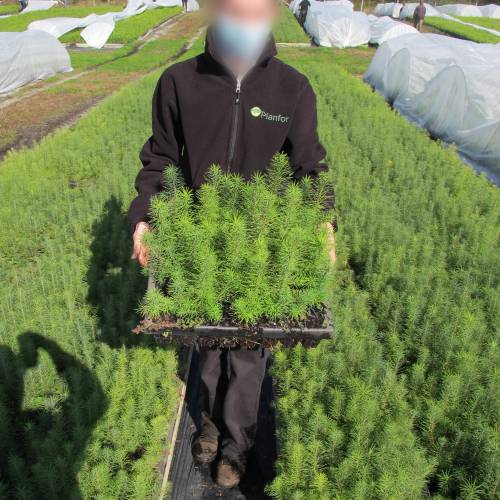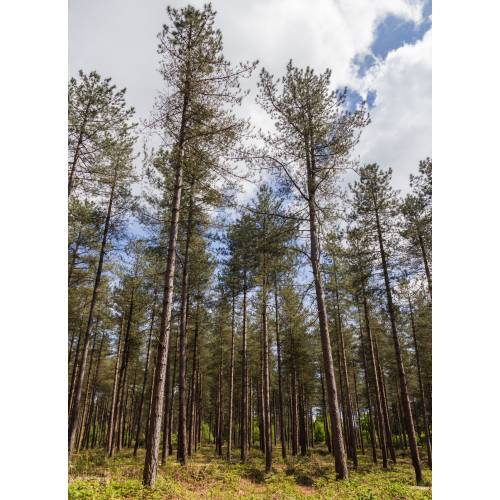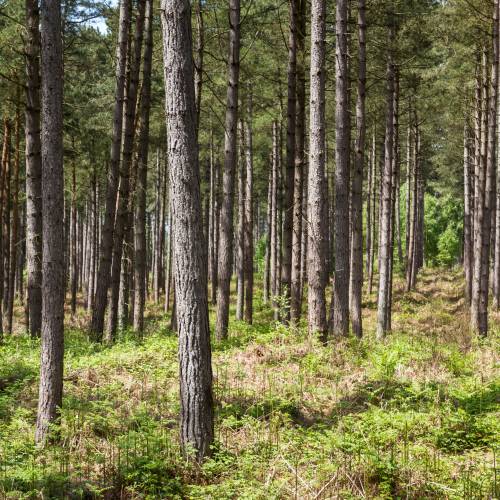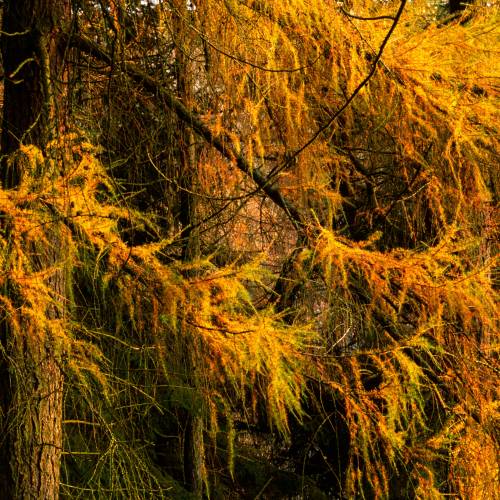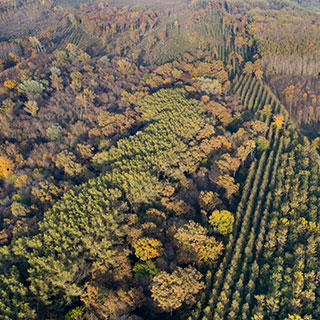
Plants
Larch, hybrid / Larix eurolepis
-
6.50 € Hybrid Larch - Larix eurolepis
7765Q - Available
-
5.95 € Hybrid Larch - Larix eurolepis
7765q - Available
-
4.95 € Hybrid Larch - Larix eurolepis
7765R - Available
-
3.89 € Special Offer - 40%
7765QX - Available
-
2.36 € Larch, hybrid - Larix eurolepis
7765r - Available
-
1.86 € Larch, hybrid - Larix eurolepis
7765S - Available
-
1.46 € Larch, hybrid - Larix eurolepis
7765T - Available
-
1.26 € Larch, hybrid - Larix eurolepis
7765U - Available
-
1.16 € Larch, hybrid - Larix eurolepis
7765V - Available
-
0.00 € hybrid larch - Larix eurolepis
7765C - Request for quotation
-
Origin: Northern hemisphere. Hybrid- Cross between the Larix decidua and the Larix kaempferi
Adult size: Approximately 40 m
Foliage: Deciduous
Type of soil: Cool and moist soil. Sensitive to acidic soil and dry areas with little water potential.
Climate: Temperate
Site: Full sun
Properties and uses:
Cross between the Larix decidua and the Larix kaempferi, this is a different resinous tree as in addition to have deciduous foliage, it has a radical change of colour in the autumn. It becomes orangey-yellow which is its distinctive characteristic.
It is also an excellent forest variety. The hybrid Larch has a shorter initial growth and exploitation time than its "parents". Its late bud breaking allows it to have a good resistance to late frost.
It is a variety thought after by woodworkers as in addition to its aesthetic quality it offers a beautiful potential « durability-strength ».
Plant, or reforest Hybrid Larch, Larix eurolepis – Foresters Guide
1) The Hybrid Larch (Robinia pseudo-acacia) is it suitable for my land? The auto-ecology of the Hybrid Larch is not well known yet and seems to cover a wide range of conditions going from the environmental needs of the European Larch to those of the Japanese Larch. Like the parent species, the Hybrid Larch needs a lot of light and doesn’t bear the competition of other forest varieties.
Its late bud breaking allows it to have a good resistance to late frost.
The Hybrid Larch thrives in moist, light and deep soils, and doesn’t like soils with low water potential (< 60mm), highly acidic or carbonate near the surface. It doesn’t like the heavy clayey soils, compact and with water logging in Spring either. The instability of the young plants is frequent in soils that are too soft or too rich (deep silt). The Larches are wind resistant thanks to their deep and powerful roots.
2) Which planting density for my Hybrid Larch plot? (Larix eurolepis)
The planting density is the number of plants planted in one hectare (acre). Here it means determining the initial number of young plants and to choosing their repartition in the available space.
The planting density is defined by the gaps in between the lines as well as the spacing in between each plant on a same line.
It is the basics of the silvicultural path which must lead to a final trees’ population of quality and to the fulfilment of the land’s owner set goals.
Advice: When choosing the density, think about the width of the tool which will allow the maintenance of the gaps in between the lines. The space in between the lines must allow clear passage for a tractor-drawn, maintenance tool.
For the Hybrid Larch (Larix Eurolepis):
- The most common density is around 1100 plants/hectare. It can sometimes go down to 800 plants/hectare.
3) How to prepare the soil to plant Hybrid Larch (Larix eurolepis)?
In Silviculture, working the soil is a key element in the success of planting. The root system of the tree must take rapidly where planted. Whether the work is done mechanically or manually, we recommend working the soil in its depth for optimum planting.
4) How to plant the Hybrid Larch (Larix eurolepis)?
a- Receipt, storage and preparation of the plants before planting
- Upon receipt, place the crates side by side, on a flat surface so as there is no air circulation underneath. Choose a shady spot protected from wind;
- Maintain a good humidity level of the plants on the crates placed on the edges,
- Plan for the possibility of watering if planting is delayed or if the plants require water,
- In case of frost, do not handle the plants and if frost is forecasted for several days, place mulch on the edges.
b- Planting
Our team of professional planters use a planting cane to place the earth-balled plants in situ. This ergonomic, light tool allows quality, quicker planting work. It is also possible to carry out a traditional planting work using a pickaxe or a spade
In all case, you must:
- Dig a hole a little bit larger than the earth-ball ;
- Position it well in the hole;
- Cover it entirely;
Finally, the worker will tamp down the soil carefully with its foot. It is forbidden to press strongly or again to heel-butt the plant to avoid crushing the earth-ball and damage the root system of the plant.
Video on planting using a planting cane
Buy Planting cane
5) How to limit weeds on my Hybrid Larch plot (Larix eurolepis) ?
During the first years, it is essential to eliminate all self-propagating plants. Not controlled they are going to be in competition with your plants and are going to deprive the young trees of the vital elements they require to grow (water, light and nutritional elements). You must therefore eliminate mechanically this unwanted competition until the trees are big enough to be able to dominate it.
Two types of operations are possible after planting:
Manual clearing around the plants
It is in fact acts often carried out using portable thermic Strimmers or billhooks to clear plants on a line or around the plants themselves.
Mechanical clearing of the space in between the lines
These actions are done using cutters and flail mowers, horizontal or vertical cutters, mounted on mini excavators or tractors. As a result, they cannot be undertaken outside the spaces available between the tree lines (seedlings or plants).
6) How to protect my young False Acacia plants from wildlife (Larix eurolepis) ?
There is a necessity to protect the plot as soon as the population’s density of Cervidae (deer and roe deer in particular) risk leading to significant damage such as undergrowth of the plants or friction of the stems. Sometimes, the setting up of plants’ protection is also necessary as soon as the rodents’ population (rabbits, hares, coypu, voles...) are locally important.
3 types of protections are possible:
- Individual, mechanical Protections ( dissuasive netting, photo-degradable tubes,...)
- Protection by total wire-fencing of the plot,
- Protection by applying a repellent on each plant or on the borders of the plot.
Catalogue Protections against Game

